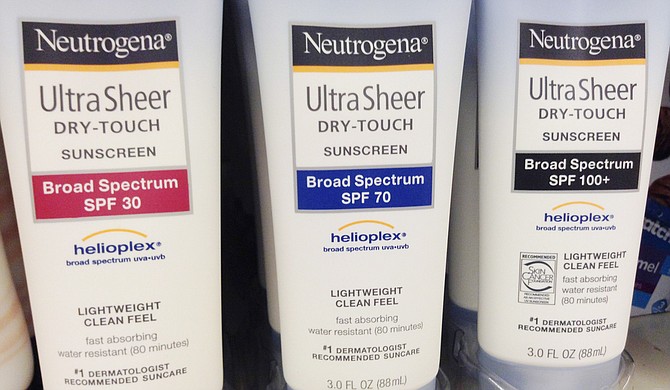Wearing sunscreen with an SPF of 30 or more and that protects against UVA and UVB rays will help decrease your risk of skin cancer. Photo courtesy Flickr/Mike Mozart
Only a generation ago, many people thought a suntan was healthy. Now, we know it is anything but. In fact, today, doctors know a tan is actually a response to the skin being injured by the sun. And although a tan may not be as severe an injury as a sunburn, any color change means the skin has been harmed. Suntans and sunburns increase a person's risk of developing skin cancer.
It is the most common type of cancer in the U.S. The American Cancer Society, about 3.5 million cases of basal and squamous cell carcinoma are diagnosed in the U.S. each year and account for the vast majority of cases. They are often curable, especially when discovered early, and rarely spread to other areas of the body.
However, between 2 and 5 percent of skin cancers—more than 76,000 cases this year—will be potentially deadly melanoma. Like most skin cancers, melanoma is almost always curable when detected early.
However, it is much more likely to spread to other areas of the body, where it can be much harder to treat. As a result, melanoma causes the vast majority skin-cancer deaths in the U.S., accounting for approximately 10,000 of the 13,000 annual deaths from the disease.
Skin Cancer Risk Factors
Although most skin cancers are slow to spread and treatable, they can also be deadly. Here are some things that can increase your risk of skin cancer.
UV exposure: The most important risk for the disease is exposure to ultraviolet light, including sunlight, sunlamps and tanning beds. The greater the exposure, the greater the risk. Although the rates of melanoma are higher in the southeast where the sun is strong, some of the highest rates in the U.S. are found in the northwest. This should be a stark reminder that overcast skies do not protect against UV rays. Protecting your skin even on cloudy days is critical.
Fair Skin: The American Cancer Society reports melanoma is more than 20 times more common in Caucasians than African Americans. The risk is also higher in individuals with blonde or red hair, blue or green eyes, or skin that burns or freckles easily.
Age: Although skin-cancer risk increases as you age, melanoma is one of the most common cancers in young adults, especially women. People who have had at least one severe (blistering) sunburn as a child, or used sunlamps or tanning beds before age 30, also have an increased risk.
For more information about skin cancer risks, symptoms and treatments, visit the Cancer Treatment Centers of America website at cancercenter.com. Ioana Bonta is a medical oncologist with Cancer Treatment Centers of America at Southeastern Regional Medical Center in Newnan, Ga.
What you can do
Because it's virtually impossible to go through life with no sun exposure, everyone is at risk. But you can take several steps to protect yourself from the sun and help reduce your chances of developing skin cancer.
• Sunscreen: Apply sunscreen to all exposed areas 30 minutes before outdoor activities. Cover areas including the back of the ears and neck, and tops of the feet and hands (if you are balding, applying it to your scalp is also important). Use a broad-spectrum sunscreen that protects against both UVA and UVB rays, with an SPF of 30 or higher. Reapply every two hours, especially after swimming or sweating.
• Cover up: The sun's UV rays are most intense between 10 a.m. and 4 p.m. If you work outdoors, tightly woven clothes provide the best sun protection. In addition, wide-brimmed hats, ones with material that covers the back of the neck, and sunglasses help protect sensitive skin on the neck, face and around the eyes.
• Sun-safe swimwear: Look for bathing suits that cover more skin—swim shirts, one-piece suits and long trunks. Many children now wear swim shirts or t-shirts while at the pool or beach, but these are also a good idea for adults.
• Look closely: Regular thorough skin examinations are important, especially if you have a large number of moles or other risk factors. While this will not prevent skin cancer from developing, exams can help catch it early. Always tell your doctor if you see any new, unusual or changing moles or growths on your skin.
Get more wellness tips at jfp.ms/wellness.



Comments
Use the comment form below to begin a discussion about this content.
comments powered by Disqus